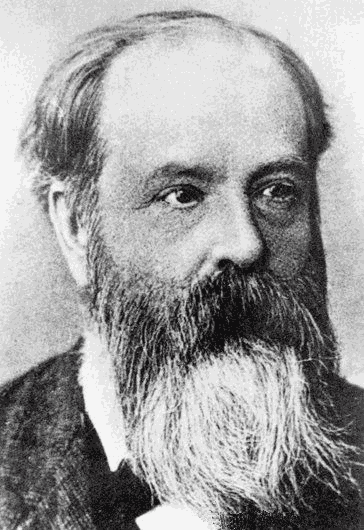|
Andrew Turberfield
Andrew J Turberfield is a British Professor of Physics based at the University of Oxford. Turberfield's research is largely based on DNA nanostructures and photonic crystals, and his work on both nanomachines and photonic crystals has been highly cited. Turberfield is a fellow of Magdalen College, Oxford. In 2011 he won the Institute of Physics The Institute of Physics (IOP) is a UK-based learned society and professional body that works to advance physics education, research and application. It was founded in 1874 and has a worldwide membership of over 20,000. The IOP is the Physica ... David Tabor Medal and Prize. References External linksTurberfield DNA group at the University of Oxford Living people British physicists DNA nanotechnology people British nanotechnologists Year of birth missing (living people) Fellows of Magdalen College, Oxford {{UK-physicist-stub ... [...More Info...] [...Related Items...] OR: [Wikipedia] [Google] [Baidu] |
University Of Oxford
The University of Oxford is a collegiate research university in Oxford, England. There is evidence of teaching as early as 1096, making it the oldest university in the English-speaking world and the world's second-oldest university in continuous operation. It grew rapidly from 1167 when Henry II banned English students from attending the University of Paris. After disputes between students and Oxford townsfolk in 1209, some academics fled north-east to Cambridge where they established what became the University of Cambridge. The two English ancient universities share many common features and are jointly referred to as ''Oxbridge''. Both are ranked among the most prestigious universities in the world. The university is made up of thirty-nine semi-autonomous constituent colleges, five permanent private halls, and a range of academic departments which are organised into four divisions. All the colleges are self-governing institutions within the university, each controlling ... [...More Info...] [...Related Items...] OR: [Wikipedia] [Google] [Baidu] |
DNA Nanotechnology
DNA nanotechnology is the design and manufacture of artificial nucleic acid structures for technological uses. In this field, nucleic acids are used as non-biological engineering materials for nanotechnology rather than as the carriers of genetic information in living Cell (biology), cells. Researchers in the field have created static structures such as two- and three-dimensional Crystal structure, crystal lattices, nanotubes, Polyhedron, polyhedra, and arbitrary shapes, and functional devices such as molecular machines and DNA computing, DNA computers. The field is beginning to be used as a tool to solve basic science problems in structural biology and biophysics, including applications in X-ray crystallography and nuclear magnetic resonance spectroscopy of proteins to determine structures. Potential applications in molecular scale electronics and nanomedicine are also being investigated. The conceptual foundation for DNA nanotechnology was first laid out by Nadrian Seeman in th ... [...More Info...] [...Related Items...] OR: [Wikipedia] [Google] [Baidu] |
Photonic Crystals
A photonic crystal is an optical nanostructure in which the refractive index changes periodically. This affects the propagation of light in the same way that the structure of natural crystals gives rise to X-ray diffraction and that the atomic lattices (crystal structure) of semiconductors affect their conductivity of electrons. Photonic crystals occur in nature in the form of structural coloration and animal reflectors, and, as artificially produced, promise to be useful in a range of applications. Photonic crystals can be fabricated for one, two, or three dimensions. One-dimensional photonic crystals can be made of thin film layers deposited on each other. Two-dimensional ones can be made by photolithography, or by drilling holes in a suitable substrate. Fabrication methods for three-dimensional ones include drilling under different angles, stacking multiple 2-D layers on top of each other, direct laser writing, or, for example, instigating self-assembly of spheres in a ma ... [...More Info...] [...Related Items...] OR: [Wikipedia] [Google] [Baidu] |
Nature (journal)
''Nature'' is a British weekly scientific journal founded and based in London, England. As a multidisciplinary publication, ''Nature'' features peer-reviewed research from a variety of academic disciplines, mainly in science and technology. It has core editorial offices across the United States, continental Europe, and Asia under the international scientific publishing company Springer Nature. ''Nature'' was one of the world's most cited scientific journals by the Science Edition of the 2019 '' Journal Citation Reports'' (with an ascribed impact factor of 42.778), making it one of the world's most-read and most prestigious academic journals. , it claimed an online readership of about three million unique readers per month. Founded in autumn 1869, ''Nature'' was first circulated by Norman Lockyer and Alexander Macmillan as a public forum for scientific innovations. The mid-20th century facilitated an editorial expansion for the journal; ''Nature'' redoubled its efforts in ... [...More Info...] [...Related Items...] OR: [Wikipedia] [Google] [Baidu] |
New Scientist
''New Scientist'' is a magazine covering all aspects of science and technology. Based in London, it publishes weekly English-language editions in the United Kingdom, the United States and Australia. An editorially separate organisation publishes a monthly Dutch-language edition. First published on 22 November 1956, ''New Scientist'' has been available in online form since 1996. Sold in retail outlets (paper edition) and on subscription (paper and/or online), the magazine covers news, features, reviews and commentary on science, technology and their implications. ''New Scientist'' also publishes speculative articles, ranging from the technical to the philosophical. ''New Scientist'' was acquired by Daily Mail and General Trust (DMGT) in March 2021. History Ownership The magazine was founded in 1956 by Tom Margerison, Max Raison and Nicholas Harrison as ''The New Scientist'', with Issue 1 on 22 November 1956, priced at one shilling (a twentieth of a pound in pre-decimal UK ... [...More Info...] [...Related Items...] OR: [Wikipedia] [Google] [Baidu] |
Magdalen College, Oxford
Magdalen College (, ) is a constituent college of the University of Oxford. It was founded in 1458 by William of Waynflete. Today, it is the fourth wealthiest college, with a financial endowment of £332.1 million as of 2019 and one of the strongest academically, setting the record for the highest Norrington Score in 2010 and topping the table twice since then. It is home to several of the university's distinguished chairs, including the Agnelli-Serena Professorship, the Sherardian Professorship, and the four Waynflete Professorships. The large, square Magdalen Tower is an Oxford landmark, and it is a tradition, dating to the days of Henry VII, that the college choir sings from the top of it at 6 a.m. on May Morning. The college stands next to the River Cherwell and the University of Oxford Botanic Garden. Within its grounds are a deer park and Addison's Walk. History Foundation Magdalen College was founded in 1458 by William of Waynflete, Bishop of Winch ... [...More Info...] [...Related Items...] OR: [Wikipedia] [Google] [Baidu] |
Institute Of Physics
The Institute of Physics (IOP) is a UK-based learned society and professional body that works to advance physics education, research and application. It was founded in 1874 and has a worldwide membership of over 20,000. The IOP is the Physical Society for the UK and Ireland and supports physics in education, research and industry. In addition to this, the IOP provides services to its members including careers advice and professional development and grants the professional qualification of Chartered Physicist (CPhys), as well as Chartered Engineer (CEng) as a nominated body of the Engineering Council. The IOP's publishing company, IOP Publishing, publishes 85 academic titles. History The Institute of Physics was formed in 1960 from the merger of the Physical Society, founded as the Physical Society of London in 1874, and the Institute of Physics, founded in 1918. The Physical Society of London had been officially formed on 14 February 1874 by Frederick Guthrie, follow ... [...More Info...] [...Related Items...] OR: [Wikipedia] [Google] [Baidu] |
David Tabor Medal And Prize
The Institute of Physics awards numerous prizes to acknowledge contributions to physics research, education and applications. It also offers smaller specific subject-group prizes, such as for PhD thesis submissions. Bilateral awards * The Max Born Medal and Prize is awarded yearly by the German Physical Society and the Institute of Physics in memory of the German physicist Max Born. The prize recognizes "outstanding contributions to physics" and is awarded to physicists based in Germany and in the UK or Ireland in alternate years. * The Fernand Holweck Medal and Prize is awarded jointly by the French and British Physical Societies for distinguished work in any aspect of physics that is ongoing or has been carried out within the 10 years preceding the award. * The Harrie Massey Medal and Prize is awarded biennially jointly by the Institute of Physics and by The Australian Institute of Physics. * The Giuseppe Occhialini Medal and Prize is awarded to physicists in alternating yea ... [...More Info...] [...Related Items...] OR: [Wikipedia] [Google] [Baidu] |
Living People
Related categories * :Year of birth missing (living people) / :Year of birth unknown * :Date of birth missing (living people) / :Date of birth unknown * :Place of birth missing (living people) / :Place of birth unknown * :Year of death missing / :Year of death unknown * :Date of death missing / :Date of death unknown * :Place of death missing / :Place of death unknown * :Missing middle or first names See also * :Dead people * :Template:L, which generates this category or death years, and birth year and sort keys. : {{DEFAULTSORT:Living people 21st-century people People by status ... [...More Info...] [...Related Items...] OR: [Wikipedia] [Google] [Baidu] |
British Physicists
British may refer to: Peoples, culture, and language * British people, nationals or natives of the United Kingdom, British Overseas Territories, and Crown Dependencies. ** Britishness, the British identity and common culture * British English, the English language as spoken and written in the United Kingdom or, more broadly, throughout the British Isles * Celtic Britons, an ancient ethno-linguistic group * Brittonic languages, a branch of the Insular Celtic language family (formerly called British) ** Common Brittonic, an ancient language Other uses *'' Brit(ish)'', a 2018 memoir by Afua Hirsch *People or things associated with: ** Great Britain, an island ** United Kingdom, a sovereign state ** Kingdom of Great Britain (1707–1800) ** United Kingdom of Great Britain and Ireland (1801–1922) See also * Terminology of the British Isles * Alternative names for the British * English (other) * Britannic (other) * British Isles * Brit (other) * Br ... [...More Info...] [...Related Items...] OR: [Wikipedia] [Google] [Baidu] |
British Nanotechnologists
British may refer to: Peoples, culture, and language * British people, nationals or natives of the United Kingdom, British Overseas Territories, and Crown Dependencies. ** Britishness, the British identity and common culture * British English, the English language as spoken and written in the United Kingdom or, more broadly, throughout the British Isles * Celtic Britons, an ancient ethno-linguistic group * Brittonic languages, a branch of the Insular Celtic language family (formerly called British) ** Common Brittonic, an ancient language Other uses *''Brit(ish)'', a 2018 memoir by Afua Hirsch *People or things associated with: ** Great Britain, an island ** United Kingdom, a sovereign state ** Kingdom of Great Britain (1707–1800) ** United Kingdom of Great Britain and Ireland (1801–1922) See also * Terminology of the British Isles * Alternative names for the British * English (other) * Britannic (other) * British Isles * Brit (other) * Brito ... [...More Info...] [...Related Items...] OR: [Wikipedia] [Google] [Baidu] |




